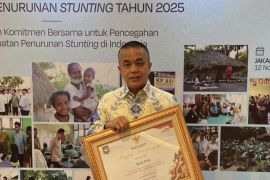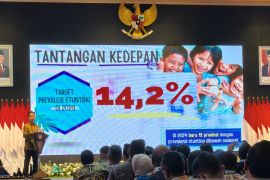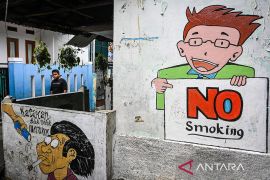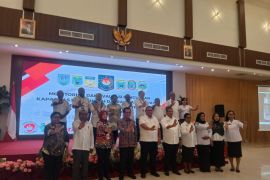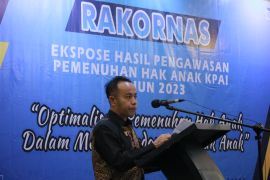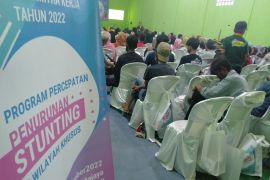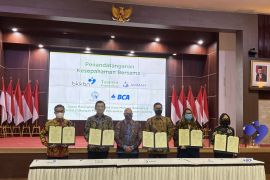"We need to do detailed studies at (more specific) regional scopes, particularly at the provincial level, which have different characteristics," deputy for population control at BKKBN, Bonivasius Prasetya Ichtiarto, explained during the “Dissemination of Research Results and Policy Brief for the Acceleration of Stunting Reduction,” which was accessed from here on Thursday.
The prevalence of stunting in Indonesia is still very varied, he noted. This is due to socioeconomic, cultural, and geographical conditions, which greatly produce variation between provinces.
Based on SSGI data, the stunting rate in Indonesia was 24.4 percent in 2021 as against the target of 20 percent set by the World Health Organization (WHO).
Ichtiarto said that there were 20 provinces whose stunting rates were above the national average. In fact, the government has designated as many as 12 provinces as priority areas for stunting reduction efforts.
This means that in 2021, out of the estimated 23.3 million children aged under five in Indonesia, 5.7 million were believed to be stunted.
"Demography-wise, stunting certainly (puts) the demographic bonus use (at risk). The condition of the low intellectual capacity of children due to stunting can reduce the competitiveness and quality of Indonesia's human resources in the future," Ichtiarto said.
Related news: Public awareness about stunting still low: BKKBN head
Further, stunting would also have a negative impact on the Indonesian economy, and could even affect the national gross domestic product (GDP).
He urged everyone to make collective and committed efforts to address the issue, which is threatening the quality of human resources, besides conducting studies and innovations to further suppress the stunting rate.
He said he expects everyone to join in the efforts, as stipulated in Presidential Instruction Number 3 of 2022 on optimizing quality family villages so that the quality of human resources can be improved, as well as reinforce family institutions by optimizing the implementation of quality family villages in all villages.
"This presidential instruction is also very much in line with the acceleration of stunting reduction through collective movements of everyone in the community, government, and private sector, starting from the village scope," he added.
Other efforts include improvement of education, poverty eradication, cultural approaches, and pentahelix collaboration, which are also key to successful stunting prevention and reduction.
Related news: BKKBN invites santri to accelerate stunting reduction in children
Related news: Legislator asks government to increase stunting reduction budget
Translator: Hreeloita D S, Mecca Yumna
Editor: Suharto
Copyright © ANTARA 2022

